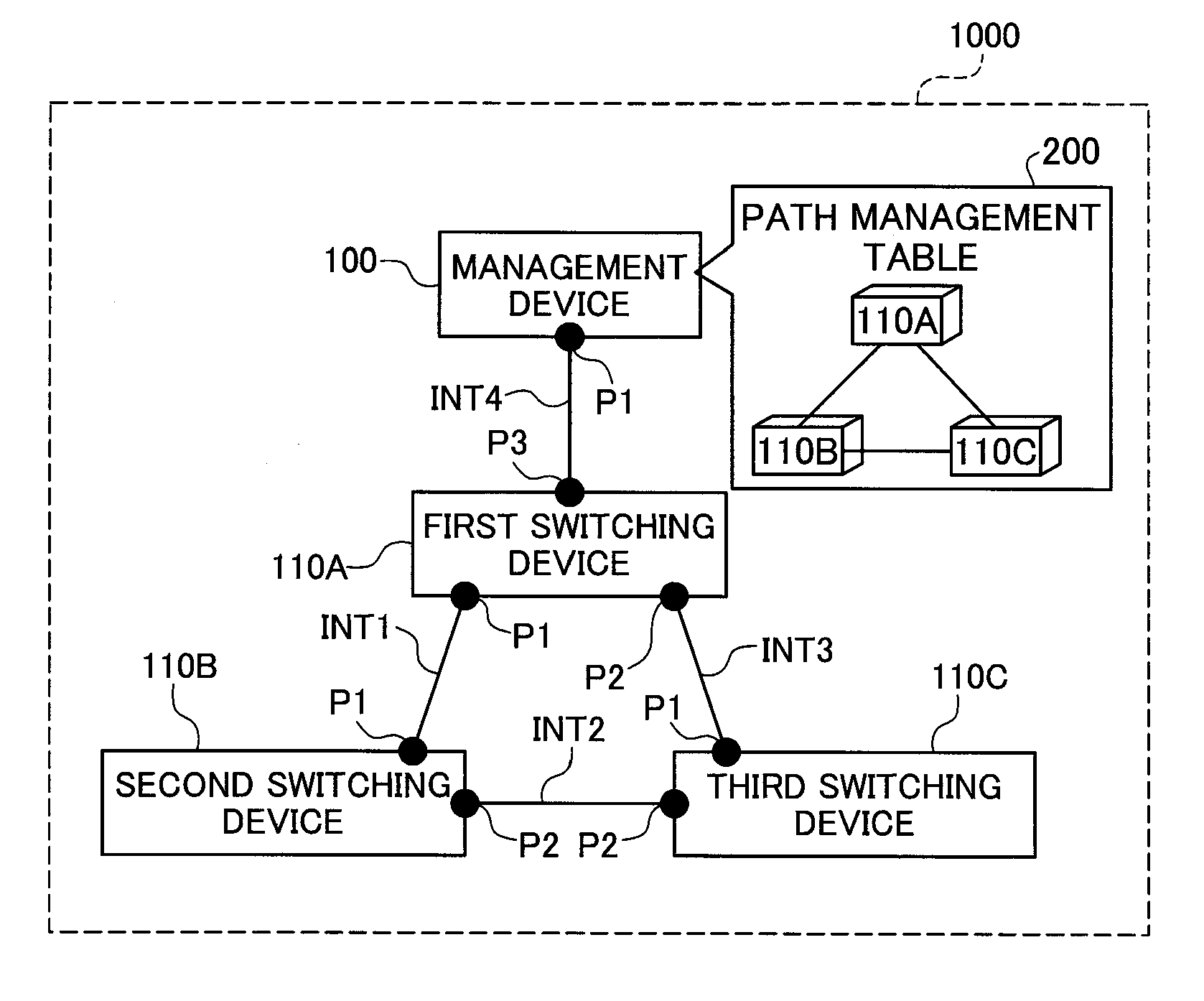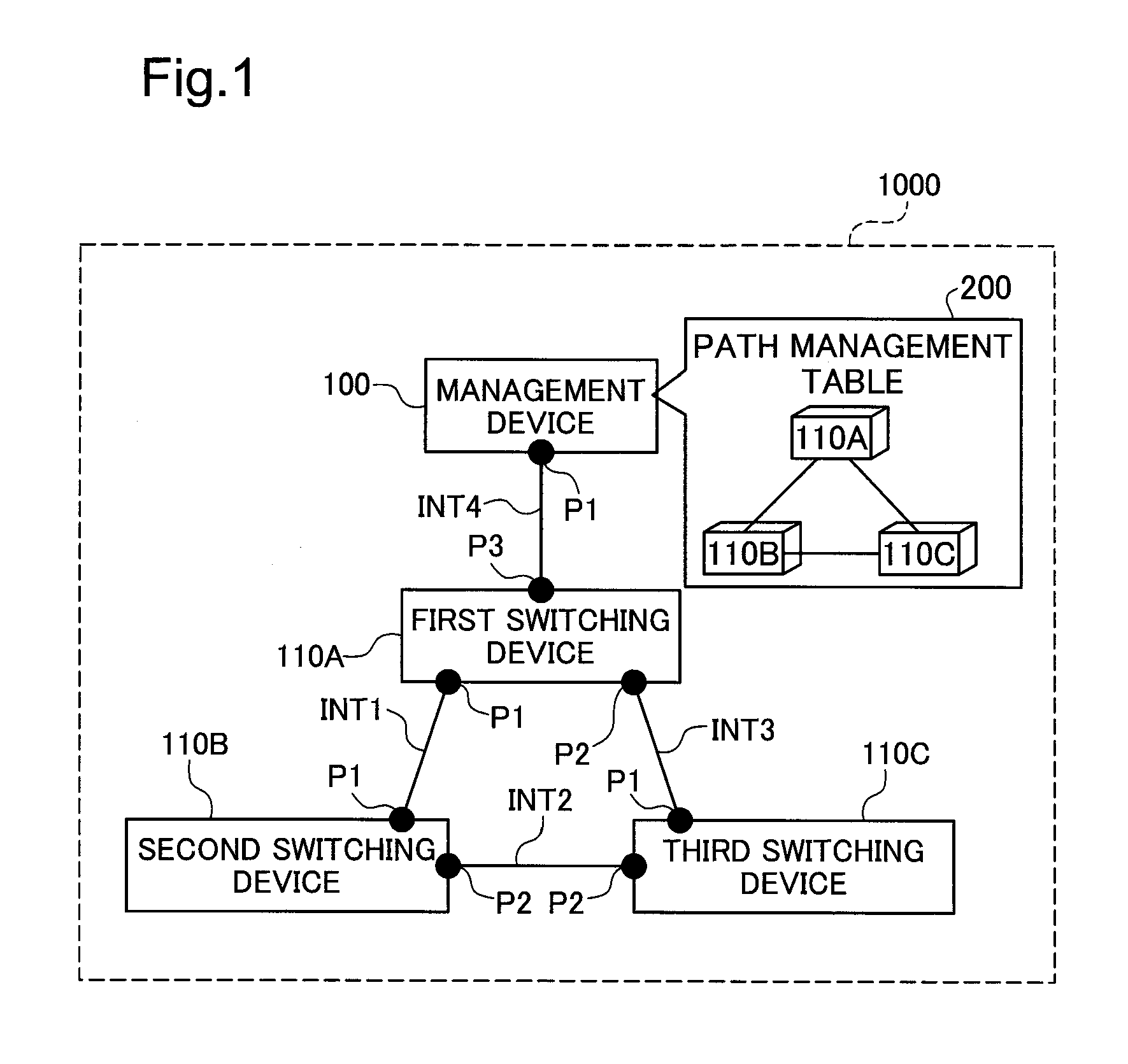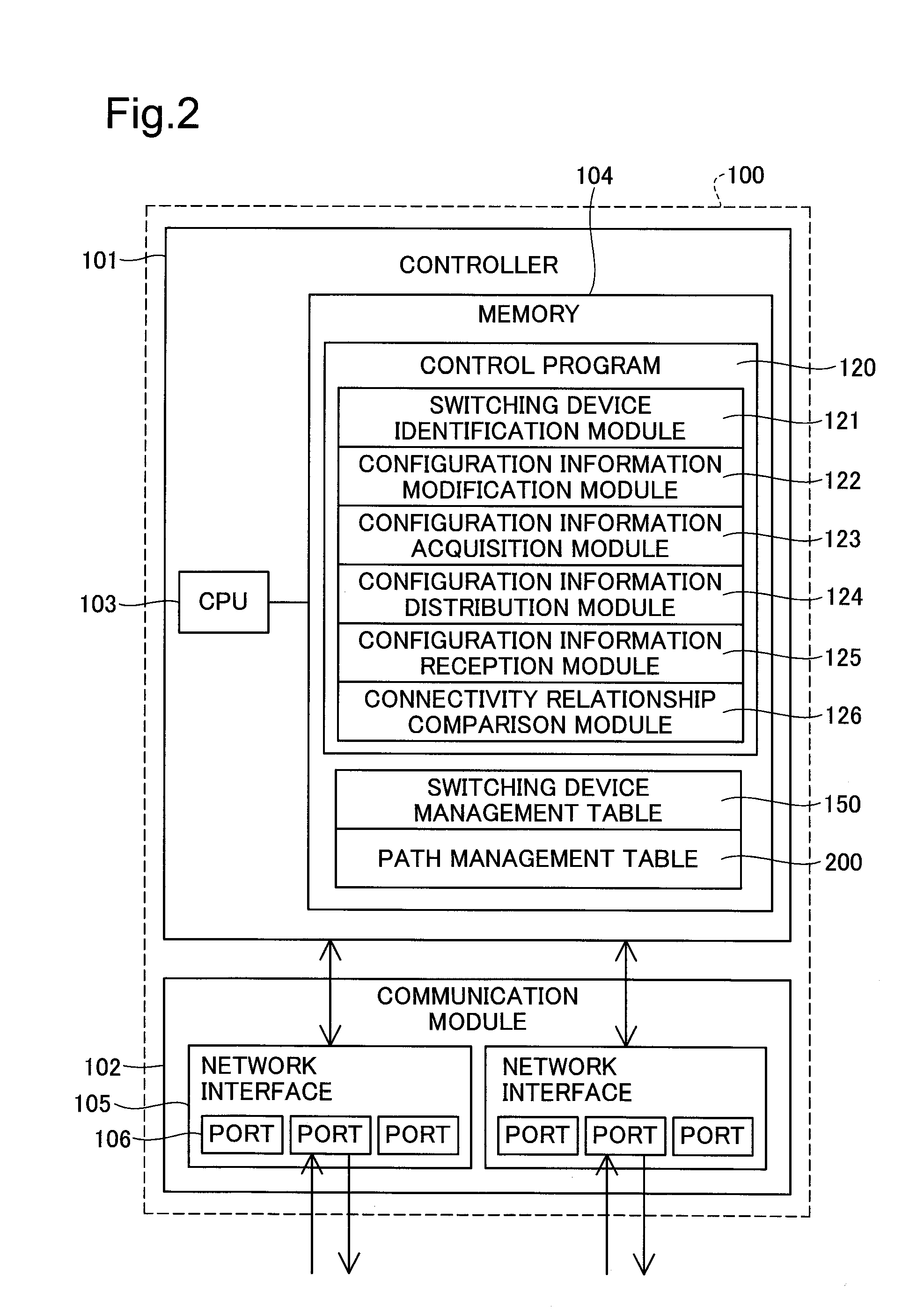Network management apparatus and switching apparatus
a network management and switching device technology, applied in electrical devices, data switching networks, digital transmission, etc., can solve the problems of not being able to acquire all the information needed for communication with other switching devices, unable to automatically mean communication, and unable to acquire mac addresses
- Summary
- Abstract
- Description
- Claims
- Application Information
AI Technical Summary
Benefits of technology
Problems solved by technology
Method used
Image
Examples
embodiment 1
c-1) Specific Embodiment 1
[0135]One specific embodiment of operation of the Network System 1000 discussed above will be described with reference to FIGS. 16 through 20. This specific embodiment shall describe processes taking place from a state in which the first switching device 110A is operating normally and the third switching device 110C is stopped, to a state in which the third switching device 110C is booted up and becomes operational. FIG. 16 is a sequence diagram showing the processing sequence of the Network System in Specific Embodiment 1. FIG. 17 is an illustration depicting an example of configuration information that is configured in the third switching device when the third switching device is booted up in Specific Embodiment 1. In FIG. 17, an example of the port-related information in the configuration information 160 of the third switching device 110C is shown. FIG. 18 is an illustration depicting an example of configuration information that is configured in the firs...
embodiment 2
c-2) Specific Embodiment 2
[0162]One specific embodiment of operation of the Network System 1000 discussed above will be described with reference to FIG. 21. This specific embodiment shall describe the processes in the event that for some reason the third switching device 110C has stopped. FIG. 21 is a sequence diagram depicting the Network System in Specific Embodiment 2.
[0163]Once the third switching device 110C stops (P10), the third switching device 110C will no longer be able to transmit verification of live communication to the management device 100, and will no longer be able to transmit verification of live communication to the other switching devices 110.
[0164]Once the verification of live communication that was periodically transmitted from the third switching device 110C has ceased (FIG. 21: C10), the management device 100 will detect this (FIG. 12: S430: YES), and will change the value of the communication status 155 with the third switching device 110C in the switching d...
embodiment 3
c-3) Specific Embodiment 3
[0168]One specific embodiment of operation of the Network System 1000 discussed above will be described with reference to FIG. 22. This specific embodiment shall describe the processes in the event that, despite the third switching device 110C having been booted up, it cannot communicate with the management device 100 for some reason. FIG. 22 is a sequence diagram depicting the Network System in Specific Embodiment 3.
[0169]If a communication failure has occurred so that communication is not possible between the third switching device 110C and the management device 100 (FIG. 22: P10, PL20), communication can no longer be established between the third switching device 110C and the management device 100, and verification of live connection can no longer be transmitted to the management device 100.
[0170]Once the verification of live communication that was periodically transmitted from the third switching device 110C has ceased (FIG. 22: C10), the management dev...
PUM
 Login to View More
Login to View More Abstract
Description
Claims
Application Information
 Login to View More
Login to View More - R&D
- Intellectual Property
- Life Sciences
- Materials
- Tech Scout
- Unparalleled Data Quality
- Higher Quality Content
- 60% Fewer Hallucinations
Browse by: Latest US Patents, China's latest patents, Technical Efficacy Thesaurus, Application Domain, Technology Topic, Popular Technical Reports.
© 2025 PatSnap. All rights reserved.Legal|Privacy policy|Modern Slavery Act Transparency Statement|Sitemap|About US| Contact US: help@patsnap.com



